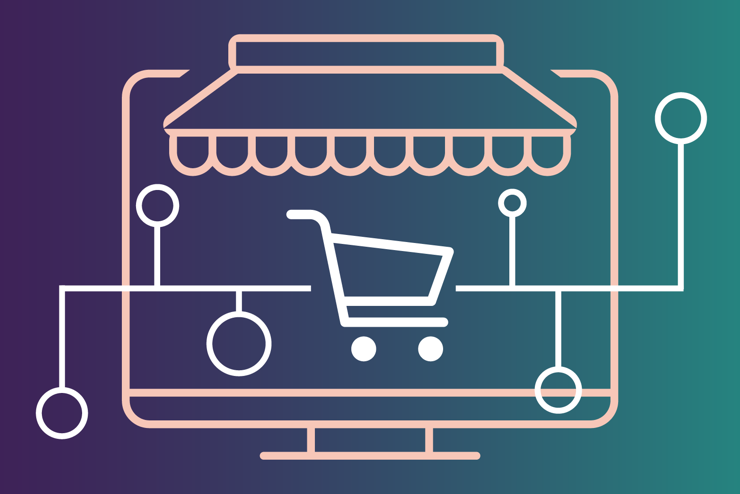Top Facts On Choosing Sellvia Wordpress Dropshipping Services
Wiki Article
Dropshipping Services For Us Markets: How Do You Assess Seo And Traffic Generation From An Amazon Seller Using Shopify, Wordpress And Wordpress
It is essential to analyze SEO and traffic generation for Amazon Seller, Shopify and WordPress (WooCommerce) to ensure the visibility and growth of organically for the U.S. Dropshipping Market. Each platform is distinct in its SEO and traffic strategy strengths and limitations.
1. Amazon Seller
Amazon Search Algorithm or Amazon-Specific Search Engine Optimization
Keyword Optimization: Amazon SEO focuses heavily on product titles bullet points, descriptions as well as backend keywords. Amazon's algorithm A9 prioritises keywords that correspond to what buyers are looking for. Amazon uses tools like Jungle Scout to identify keywords. Helium 10 and MerchantWords can also be useful to research keywords.
Amazon Search Rankings are influenced by attributes associated with the product like Price, Reviews, and Fulfillment (FBA as opposed to. FBM). FBA listings are more prominent as Amazon prefers Prime products.
Quality of the listing and conversion rates Amazon's algorithm favors listings with high-quality images, A+ Content, and high conversion rates. Achieving high rankings requires compelling product descriptions, as well as Enhanced Brand content (available for registered brand owners).
The traffic generation process through Amazon
Amazon PPC campaigns and lightning deals boost visibility in Amazon's ecosystem. Sponsored Product ads are targeted at specific keywords and give you an enormous boost in visibility.
Amazon's external traffic: Amazon's algorithm favor listings that draw external traffic. Amazon's algorithm rewards listings that attract external traffic.
Amazon Sellers - Steps to Assessment
Make use of Helium 10's Keyword Tools to analyze Amazon's Keyword Tools. This tool can help you find the keywords that are most searched in the U.S.
Evaluate Listing Quality: Review your listing's images along with the descriptions, titles, and descriptions. If your company's name has been registered, then A+ content is essential. It can increase the engagement of your customers and improve rankings.
Monitor the sources of traffic. Track the performance of your sponsored ads on your site and check whether external traffic increases ranking as well as organic sales.
2. Shopify
On-page SEO and technical SEO:
Shopify offers SEO-friendly URLs and tags. Meta description and title tags can be personalized. This flexibility allows for the optimization of pages to be specifically tailored for search engine like Google.
Shopify's themes are mobile-friendly which is essential for SEO. Shopify provides tools for performance to speed up the site. This is a vital SEO aspect.
Shopify provides structured information to Google and helps Google better understand product details and present them in search results. Schema markup can increase click-through rates by displaying rich results within search engine results.
Features for generating traffic
Shopify's blogging tool is essential to content marketing. Blogging can improve the SEO of your site by targeting long-tail keywords and driving traffic with useful and engaging content.
Shopify integrates into social media platforms, such as Facebook, Instagram, and TikTok. This lets you increase traffic from social channels. You can make shoppable posts or direct links to your store, driving the traffic to your store from these platforms.
Retargeting Shopify's Email Marketing and Retargeting tools to recover abandoned carts and email marketing will increase your the return traffic of customers. Retargeting is possible by using Facebook Ads, Google Ads, and integrations with Google Ads.
Shopify: Evaluation Steps
Optimize On-Page SEO: Review Shopify's SEO tools and make sure that each product and collection page is optimized for search engines with pertinent keywords and meta-data, tailored for Google's U.S. market.
Analyze Content Capabilities - Assess the blog's function to ensure long-term growth of traffic through content marketing. Utilize keywords that are relevant to your product or service and are popular in the eyes of U.S. buyers to develop useful blog posts.
Test Traffic Channels. Make use of Google Analytics (and Shopify) to determine the amount of traffic coming from social, organic as well as email sources. You can alter your plan depending on the channel that attracts the majority of customers.
3. WordPress (WooCommerce),
The Advanced SEO Capabilities
SEO Yoast Plugin (SEO) and Rank Math (Ranking): WooCommerce utilizes WordPress's powerful SEO plugins. This gives users advanced control of meta descriptions, title tags, keywords, as well in-page SEO recommendations. These plugins are ideal for SEO.
Rich Snippets and Structured Data WooCommerce provides structured information regarding products, reviews prices, product reviews and other information. This allows WooCommerce to show rich snippets of information within Google search results and improve click-through rate.
SEO-Friendly Structure: WordPress has the flexibility to allow users to create a SEO-friendly page structure. You can customize URLs, add internal links and also add taxonomies for categories and tags. This improves search engine visibility and SEO rank.
Traffic Generation
Comprehensive Blogging: WordPress is unmatched in its blogging capabilities. These lets you develop a strong content marketing strategy aimed at long-tail U.S. keywords. Blogging can increase organic traffic and enhances SEO.
Social Media and Paid Ad Integrations: WooCommerce is integrated with major social and advertising platforms like Facebook, Instagram, Google Ads and Pinterest. You can create shopspable Facebook posts to increase traffic.
Pop-ups and email marketing: WooCommerce integrates with Mailchimp, Klaviyo, and other email tools, allowing users to store emails and then retarget visitors. Pop-ups using plugins like OptinMonster and Sumo will increase your chance of capturing leads.
WooCommerce Assessment:
Utilize SEO plugins. Use Yoast Search Engine Optimization, also known as Rank Math to optimize your blog and product pages to be in line with the targeted keywords. Concentrate on U.S. competition and search trends.
Implement Structured Data. Rich snippets of information, products pages and structured data must be made available for improved search visibility. WooCommerce's capabilities for SEO allow you to markup details of your product for Google.
Content Marketing: Use WordPress' blog to publish articles that are optimized for keywords and to target long-tail terms. WooCommerce is integrated with Google Analytics to allow you to track the growth in traffic. Then, you can adjust your content according to the most successful content. Have a look at the recommended Sellvia review for site info including build an online shop, e commerce brands, create and online store, ecommerce co, starting an online store, make a online shop, create a online shop, e commerce, selling thing online, ecommerce retailer and more.

How To Evaluate The Customer Feedback And Support
In order to ensure that customers as well as sellers are satisfied with their dropshipping experience, it's essential to look over the feedback of customers. Each platform offers different levels of support and feedback mechanisms, which can influence customer satisfaction and business success. This guide will help you evaluate these aspects across three platforms.
1. Amazon Seller
Customer Feedback Mechanisms for Customer Feedback
Amazon lets customers give reviews and ratings on products ranging from 1 to 5 stars. The feedback they leave is vital to the reputation of a seller and could significantly influence sales. Good ratings increase credibility and visibility.
Feedback from buyers: Buyers can also leave feedback for specific sellers. This will influence the overall rating of the seller and performance metrics. Negative feedback that is consistent can lead to lower visibility and account suspension.
Section Q&A: Customers can have questions or seek answers from sellers or other customers. This section is a great way to clarify product specifications and establish confidence.
Customer Support Features
Amazon Customer Service: Amazon has an excellent framework to provide customers with customer support. Amazon manages all returns and refunds, so sellers are not directly accountable. In the case of a fulfilled merchant order sellers are responsible for their own customer support.
Return Policy Amazon's return policy for returns is customer-friendly and easy to follow, which improves confidence among consumers but creates more work for sellers in managing returns.
Seller Support: Amazon offers dedicated seller support, including tools via Seller Central to resolve issues with regard to account health metrics and disputes with sellers.
Amazon Sellers: Assessment Steps
Review Seller Metrics: Examine your seller rating and feedback to determine areas that need improvement. To increase your credibility, you should aim for top ratings.
Monitor Customer Reviews - Regularly examine product reviews, queries and comments in order to quickly respond to customer complaints.
Amazon Resources: Get aware of Amazon Seller Central's support options, including performance notification and resolution choices.
2. Shopify
Customer Feedback Mechanisms
Shopify Reviews Sellers can choose to integrate apps for customer reviews (e.g. Yotpo and Judge.me), which allows customers to post reviews directly on product pages. This feedback is crucial to drive sales and establishing trust.
Social Proof: Many Shopify stores leverage social proof via testimonials, case studies, or user-generated content on social media. This can help to increase credibility and entice potential customers.
Shopify merchants are able to implement post-purchase surveys in order to collect insights about the customer experience and satisfaction. This data is used to improve the service.
Customer Support Features
Shopify's 24/7 Support is available via live chat, telephone and via email. The support is available to merchants when issues arise. This is essential to running a successful dropshipping business.
Shopify Help Center is a complete resource with articles, tutorials and forums. It offers advice on a wide range of topics that range from store configuration to strategies for online marketing.
Shopify Applications for Customer Service: Shopify supports a variety applications for customer service, such as Zendesk Gorgias that help with customer inquiries.
Shopify Assessment:
Integrate feedback: Choose the review software you would like to integrate, and then decide how you will encourage customers to leave reviews after purchase.
Test support channels: Contact Shopify Support for an assessment of the speed of response and the quality of service.
Help Center Resources: Get familiar with the Shopify Help Center so you are able to efficiently solve problems.
3. WordPress (WooCommerce).
Customer Feedback:
WooCommerce has built-in functionality to allow customers to review and leave comments on products. Sellers are able to moderate reviews in order to ensure that they are appropriate and of high quality.
Feedback Plugins. A lot of WooCommerce websites utilize plugins that provide enhanced review systems.
Social Media Integration: WooCommerce encourages customers to post reviews via social media sites. These reviews can be featured on the product's pages to increase credibility.
Customer Support Features
Self-Service Support: WooCommerce customers rely heavily on documentation and community forums to solve problems. The WooCommerce Help Docs offer extensive information, however support might not be as quick as Shopify's.
Hosting Support: WooCommerce sellers typically use services managed hosting that offer customer assistance. The quality of support offered can vary significantly between hosting providers.
Support systems are tailored: WooCommerce integrates with customer support solutions like Zendesk as well as Freshdesk. This gives sellers the flexibility to handle customer inquiries.
WooCommerce Review: Steps to Assess the Product
Evaluate Review Functionality: Verify that the review feature of your product is enabled. You may also evaluate any review plugins you need to improve the feedback process.
Test Hosting Support. Contact the support department of customer service to test their responsiveness and quality of support.
Create a Customer Support System It is possible to integrate the helpdesk or ticketing system to handle customer inquiries more effectively. View the best Sellvia review for more examples including store dropshipping, online business online, platform online shop, platform online shop, ecommerce business for sale, start website to sell products, ecommerce solution, best ecommerce platform, good items to dropship, start website to sell products and more.
